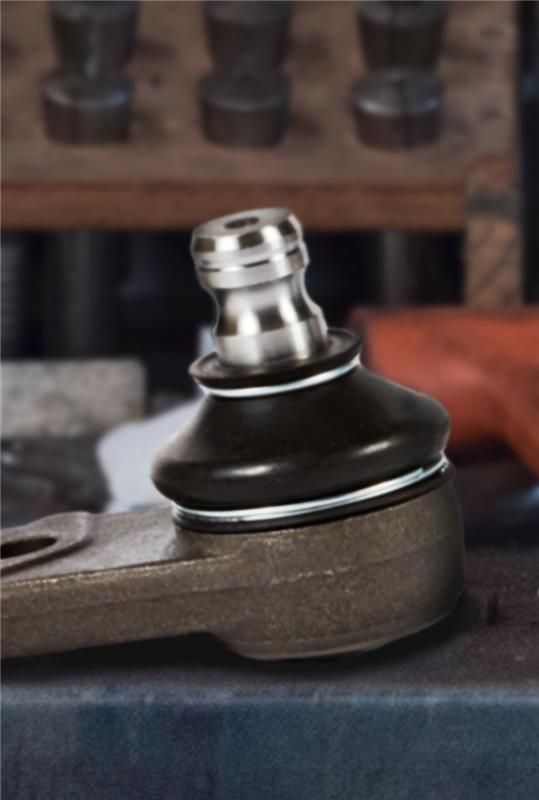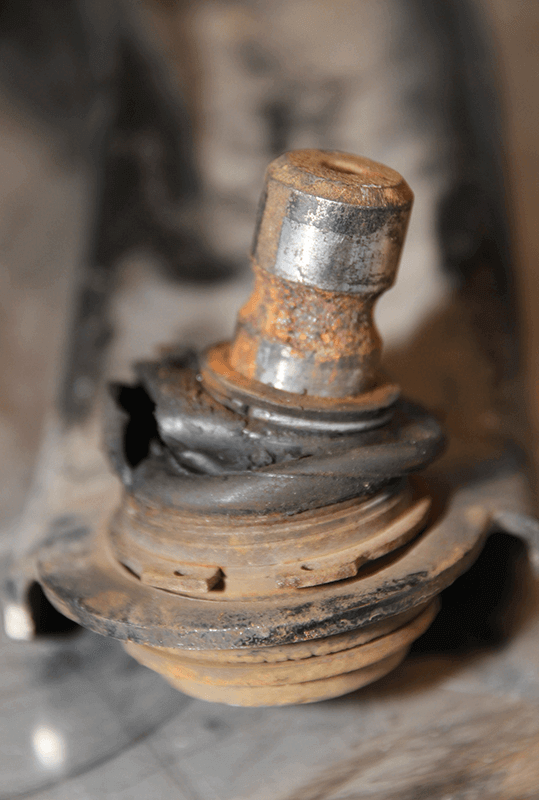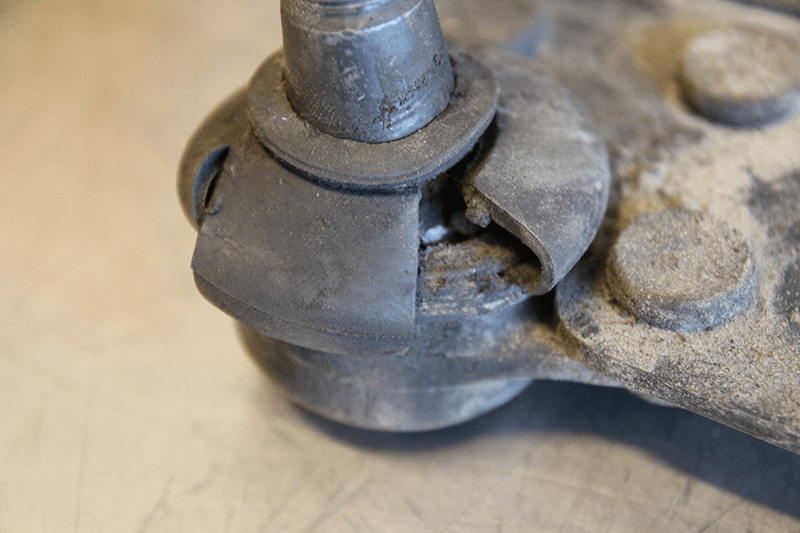Ball joint failure isn’t a common problem, but can be the result of years of driving along bumpy, uneven road surfaces. A broken ball joint may be the cause of a mysterious clunking noise or drifting steering. And once they’re worn, they will seriously affect your steering and suspension. If a ball joint fails completely, it can even result in the wheel dramatically falling off the car. A scary thought! But what are ball joints and when do you need to replace them?

The job of a ball joint
Ball joints connect the car wheels to the suspension system, and allow them to move together. As the name suggests, these clever ball-and-sockets acts as a pivot, similar to the hip joint in the human body. Ball joints are made of a bearing stud and socket that fit snugly inside a lubricated casing. They connect the control arm to the steering knuckles and allow for smooth and solid movement in the suspension. The front suspension of most cars has at least lower ball joints and in some cases upper ones as well.
Why replace ball joints?
Ball joints deteriorate if dirt, grit and impurities get inside or grease escapes, leading to a lack of lubrication. Added to this, rusting and general wear and tear also damage these suspension parts. The effects of this deterioration are excessive play and looseness (beyond the manufacturer’s specifications). While healthy ball joints allow for smooth movement from side to side, they shouldn’t wiggle or jolt up and down. This is a clear indicator that you need to look into ball joint replacement.
Watch out for these symptoms of worn ball joints:
- clunky, knocking noises, particularly when going over bumps
- creaky or squeaky noises when the suspension moves
- drifting to the side
- shaky or loose-feeling steering
- uneven or premature tyre wear or feathering
How to check ball joints

If you suspect ball joint wear, the car should be inspected as soon as possible. Ball joint replacement is not straightforward, as they can be very tricky to access and install – especially with age and rust. On some cars, the ball joint is integrated into the control arm. If you’re not familiar with the suspension and wheel assembly, it’s best to visit a garage for a professional check.
The lifespan of a ball joint
Because ball joints can last a long time, they’re often forgotten! But they do wear out and won’t usually last as long as the vehicle. Remember that they work extra hard on bumpy, winding roads, so it depends on the vehicle’s mileage and the conditions it has been exposed to.
You will find that ball joints on each side of the car tend to have similar wear, which means it’s common to have them replaced in sets or matching pairs.
Do some ball joints last longer?
Yes! Not all ball joints are created equal. Parts that are made from premium materials with an innovative design have greater strength and durability. MOOG ball joints are made from superior compounds that are better able to cope with high temperatures, dirt and abrasion. The housings are forged from a single block of fine-grain alloy steel for greater strength.

TIP: Ball joint parts made from low-grade steel or using inferior heat treatment can lessen the price, but also reduce the lifetime of the part by up to 50%.
Ball joints play a major role in the steering and suspension of cars and can last a long time. However, driving on bad ball joints can cause major damage and total ball joint failure can be fatal. If you’re unsure about the condition of the ball joints in a car, then speak to a garage about good quality replacements.
Discover long-lasting parts and problem-solving tools that make ball joint replacement easy.





